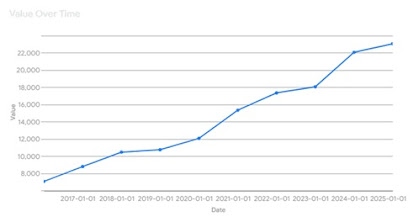If one searches for 'Retirement Planning' on Google, millions of links will appear, providing details about the subject. These links come from various sources such as Investopedia, insurance companies, mutual fund companies, financial newspapers and journals, financial advisors, government departments, and independent bloggers (like myself). The topic is so vast and broad that no two sources will provide identical information, although there may be a lot of overlapping content.
Any investment discussion is incomplete without including retirement planning.
Retirement planning is an essential part of an individual's financial journey, and it requires careful consideration and planning to ensure that you have enough resources to support your desired lifestyle after retirement. Planning for your retirement can seem overwhelming at first, but with the right guidance, it can become a simple and achievable process.
In this blog post, we will discuss various factors that should be considered when planning for retirement and provide a step-by-step guide on how to create a comprehensive retirement plan.
Determine Your Retirement Age
The first step in retirement planning is to determine the age at which you plan to retire. This age will vary depending on your career goals, personal preferences, and financial circumstances. Many people choose to retire at age 58 or 60, but you can retire earlier or later depending on your goals.
It is important to note that the earlier you retire, the longer you will need to fund your retirement.
Estimate Your Retirement Expenses
Once you have determined your retirement age, the next step is to estimate your retirement expenses. It is important to be realistic when estimating your expenses, and it is recommended that you err on the side of caution by assuming that your expenses will be higher than anticipated. Keep in mind that healthcare costs tend to increase as you age, so it is important to budget for this accordingly.
Assess Your Retirement Income Sources
After estimating your retirement expenses, the next step is to assess your retirement income sources. These could be rent from a second house, interest on deposits with banks or post office, etc, dividend from stocks, pension if eligible from employer, annuity if any on insurance policies, etc. Off late systematic withdrawals (SWPs) from mutual funds have become a popular and tax effective source.
Determine Your Retirement Income Gap
After assessing your retirement income sources, the next step is to determine your retirement income gap which is the difference between your estimated retirement expenses and your estimated retirement income.
If your retirement income is greater than your estimated expenses, you are in good shape. However, if your expenses are greater than your retirement income, you will need to identify ways to bridge this gap.
Develop a Retirement Savings Plan
To bridge your retirement income gap, you will need to develop a retirement savings plan. Your plan should identify how much you need to save each year to achieve your retirement goals.
You should consider your tax situation and your investment goals when selecting a retirement savings vehicle. Getting the help of a qualified and experienced advisor will be invaluable in such a situation.
It is important to start saving for retirement as early as possible to take advantage of the power of compounding. If you have not started saving for retirement, it is never too late to begin.
Manage Your Debt
Managing your debt is an important part of retirement planning. High levels of debt can impede your ability to save for retirement and increase your retirement income gap.
If you have debt, it is important to develop a plan to pay it off as soon as possible. You should prioritize high-interest.
To sum up, retirement planning encompasses several aspects, as detailed above. Anyone desiring a well-planned retirement should diligently address these aspects to ensure they are prepared for anticipated, or at least expected, contingencies.
The content made available in this article is for general informational purposes only. While every effort has been made to ensure the accuracy and completeness of the content, it should not be considered as a substitute for professional consultation.






